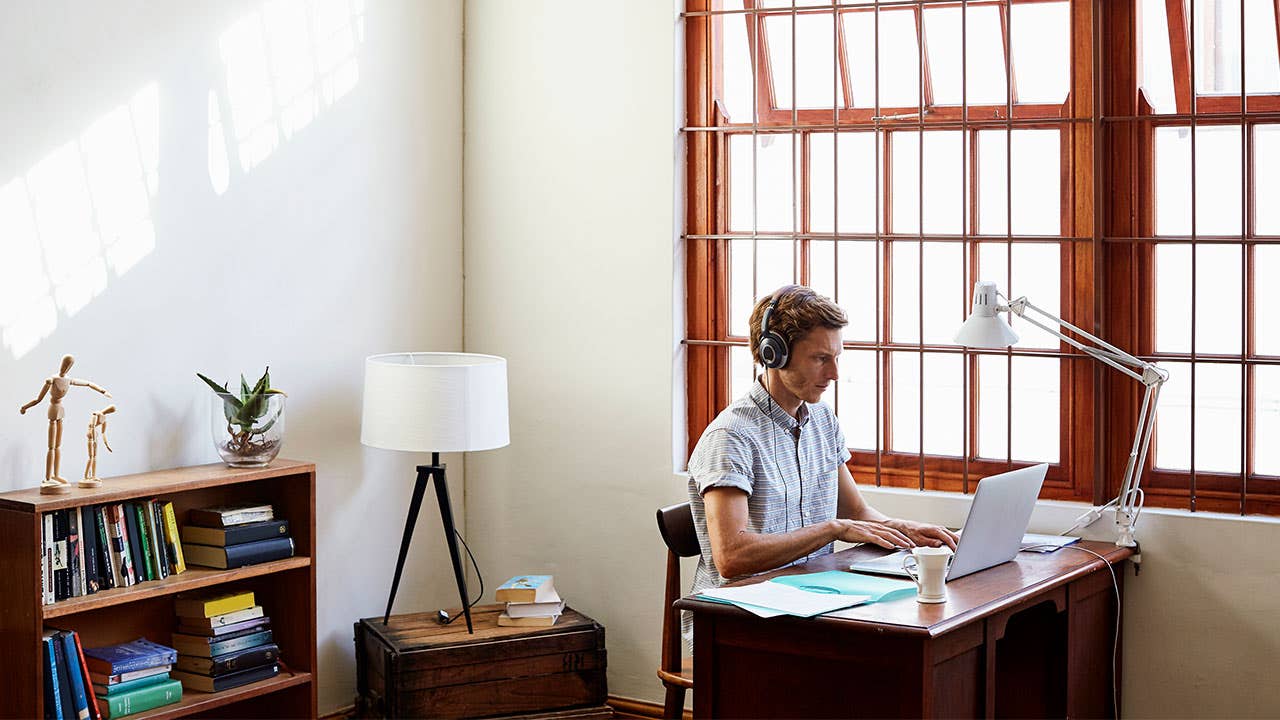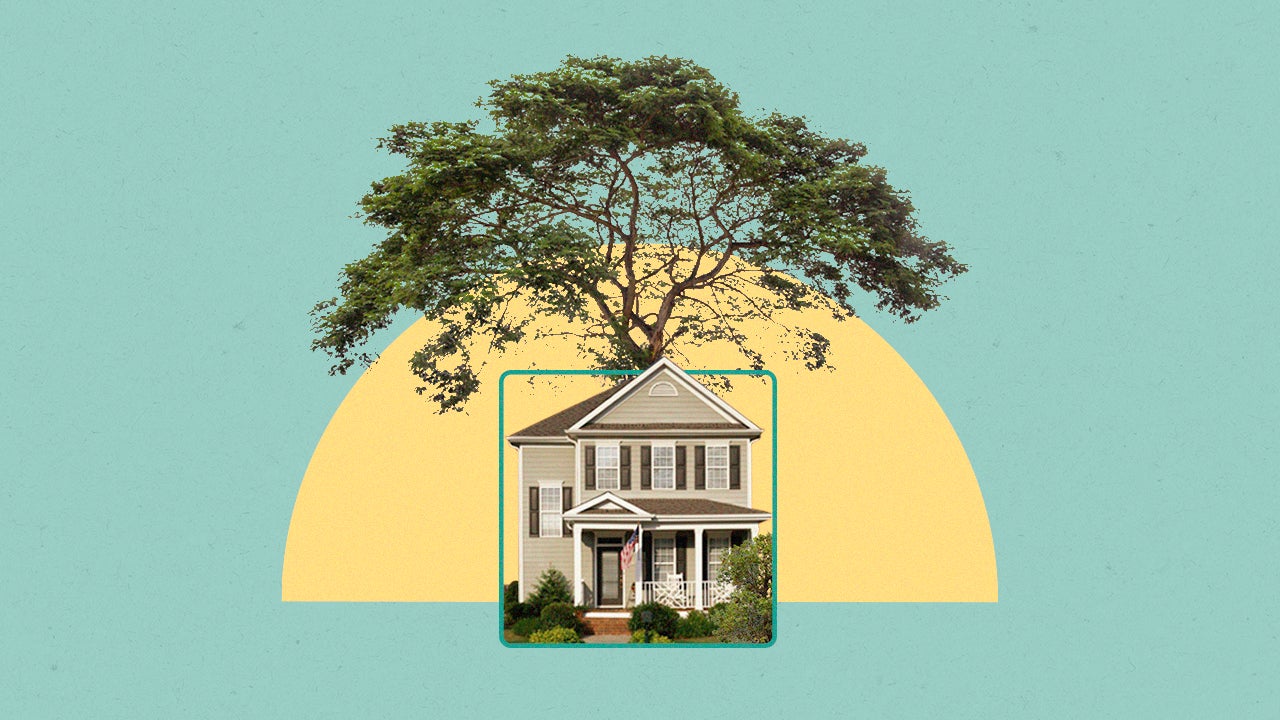Should I invest while saving money for a down payment?

Saving for a down payment on a home is a major financial goal for many people, but that effort shouldn’t get in the way of investing for other long-term goals such as retirement. However, there are things you can do to boost your savings until you’ve bought a home without sacrificing too much in terms of investing for retirement.
Key takeaways
- Hitting the brakes on investing while saving money for a down payment can put your long-term financial well-being at risk.
- Experts recommend that individuals contribute at least enough to qualify for any company matching contribution in a workplace retirement plan while saving for a home purchase.
- Although there are circumstances in which the IRS allows savers to access money from tax-advantaged retirement accounts for home-related expenses, potential early-withdrawal penalties, taxes and the loss of investment growth are major downsides.
How to prioritize investing while saving for a house
While you might not be able to max out your 401(k) contributions or fully fund an IRA, continuing to save some retirement money is far better than completely hitting pause when you’re saving for a house.
“It’s critical to save for retirement even if you’re saving for a house. If your employer matches your 401(k) contributions, then contribute up to the match,” says Joel Shaps, former vice president at Goldman Sachs Personal Financial Management. “The minimum I would save is the matched contribution because that’s like free money.”
Continuing to reap the rewards of investing while saving for a home purchase may not be as onerous as you think. The key is to prioritize the dollars you have available to invest:
- Invest enough in your 401(k) to earn any employer match: The average employer match is 4.6 percent, according to Vanguard’s How America Saves 2024 report. Let’s say you earn $80,000 a year. Contributing $3,680 to your company 401(k) plan would be enough to earn the full company match, doubling your total contribution to $7,360 for the year.
- Save something in an IRA: Because IRAs — both Roth IRAs and traditional IRAs — are funded fully by individuals, there is no match up for grabs. Still, if you don’t have access to a workplace retirement plan with a match, this is a good place to start. In 2025, the IRS allows individuals under age 50 to contribute up to $7,000 in an IRA, while those age 50 and over can contribute up to $8,000. Most brokerages have no minimum investment requirements to open an IRA.
Using retirement money for a house
Financial experts universally frown upon withdrawing retirement money for anything short of an emergency, and this includes buying a house. But what if the amount you’ve earmarked for a down payment falls short of what’s required?
Under certain circumstances the IRS allows savers to access money in a tax-advantaged retirement account for home-related expenses, including a down payment. The rules and tax consequences vary depending on account type.
Can you use money from an IRA to buy a house?
You can tap your Roth IRA or traditional IRA for up to $10,000 for the purchase or remodel of a first home without being subject to the 10 percent early-withdrawal penalty that typically applies to those under the age of 59½. If you are married and your spouse also qualifies, you can each withdraw up to $10,000.
Although not ideal, dipping into an IRA for money to put toward a home purchase may be justified if you come upon a great real estate deal and don’t have access to a down payment.
Can you use money from a 401(k) to buy a house?
The same leniency doesn’t apply to 401(k)s. If you pull money before age 59½ from your 401(k), with a few exceptions, you’ll be assessed a 10 percent early-withdrawal penalty on the amount you withdraw and you’ll have to pay income taxes on that money.
You may, however, be able to borrow money from a 401(k) to buy a house. The IRS allows you to borrow up to 50 percent of your vested account balance or $50,000, whichever is less, for a primary residence purchase. Note: Not all employers allow 401(k) loans. Plus, you’re required to pay back the loan over time; and if you leave your job, the deadline to pay it will move up quickly.
Due to the tax hit and the added cost of an early-withdrawal penalty if you’re not yet 59½, withdrawing money from a 401(k) — versus taking a 401(k) loan — should only be a last-ditch solution for coming up with down-payment money.
Money tip: If you’re looking for additional ways to make money, consider finding a passive income strategy that works for you. It may help you achieve your savings goals faster.
Short-term savings options
If you plan to buy a house within five years or less, then you probably don’t want to save your house money in something volatile like the stock market. While stocks have generally performed well over the past five years, they’ve seen some sharp downturns along the way, such as during the onset of the COVID-19 pandemic and most of 2022 as investors grappled with rising interest rates.
The stock market is for people who can keep their money invested over the long term. Money needed in the next three to five years should not be subject to market fluctuations.
That doesn’t mean you have to give up on earning a little extra return on your down payment money. There are several low-risk investment options to choose from if you’re saving for short-term goals. Here are some to consider:
- High-yield savings account: These savings accounts at online banks earn higher rates of interest than traditional savings accounts and are still FDIC-insured.
- Money-market funds: A money-market fund is another improvement over what you’ll get from most checking or savings accounts, but these funds aren’t FDIC-insured.
- CDs: A certificate of deposit, or CD, invests in short-term securities to earn you more than you would from a typical savings account. Be sure to understand how long your money will be tied up in the CD before committing funds. CDs are FDIC-insured.
- Treasurys: Treasury securities are issued by the federal government and are generally considered risk-free when it comes to credit risk. However, your investment could still lose value if interest rates rise or the bonds fail to keep up with inflation.
Look at low-down-payment loans
Keep in mind that there is no requirement to put down 20 percent on a home. According to a 2024 National Association of Realtors report, the median down payment among home buyers was 15 percent.
There are low- and no-down-payment options that require even less for eligible home buyers:
- A conventional conforming loan down payment can be as little as 3 percent, depending on the mortgage lender, borrower and property type.
- Federal Housing Administration, or FHA, loans require as little as 3.5 percent down.
- The Veterans Administration and the USDA Rural Development Program offer zero-down-payment loans for qualified home buyers.
- Other low-down-payment options exist through Fannie Mae and Freddie Mac.
While there are costs associated with these financing options — including mortgage insurance premiums (PMI) — you can balance those costs against the potential for rising home prices and mortgage interest rates.
There may also be down payment assistance programs within your state to make it easier for first-time home buyers to afford a home. Check to see if you meet the qualifications for any of these kinds of programs.
Compare the options available with the costs of conventional financing. You may decide it’s worth it to go with a low down payment program and get into your first home sooner, rather than saving up for a 10 percent to 20 percent down payment.
FAQs
Bottom line
Saving for a near-term goal need not completely derail your long-term investing plans. Even if you’re unable to fully stuff your retirement piggy bank while saving for a home purchase, continue to invest at least enough to receive any employer match in a workplace plan. At the same time, consider low-risk investments (like a high-yield savings account or CDs) for money earmarked for a down payment.
— Bankrate’s Dayana Yochim contributed to an update of this story.
Why we ask for feedback Your feedback helps us improve our content and services. It takes less than a minute to complete.
Your responses are anonymous and will only be used for improving our website.






